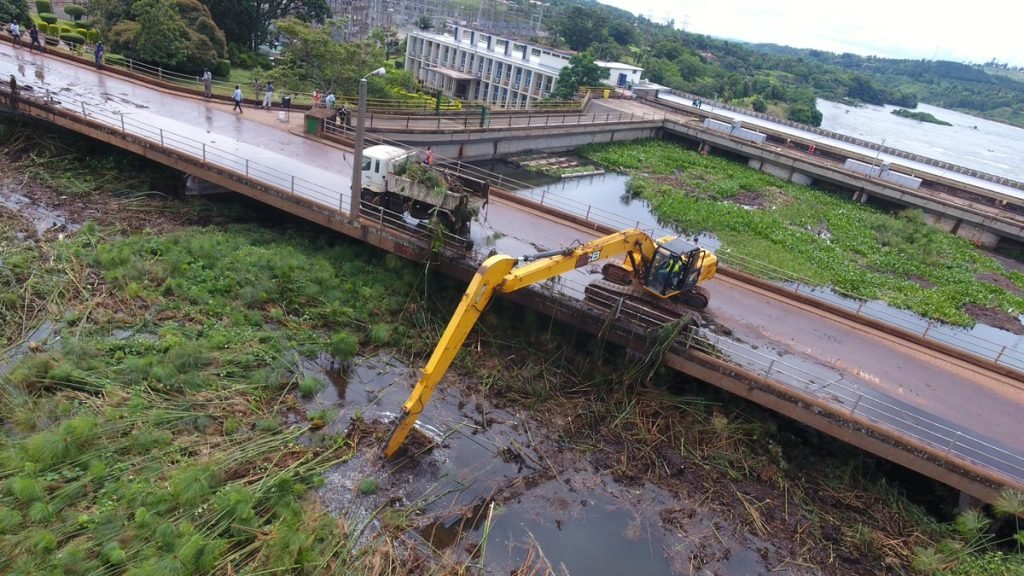As if the world is not facing enough 2020 trouble, Lake Victoria decides it’s payback time, by adding onto the year’s calamities which have humbled and leveled all. Was the year 2020 celebrated, only to have various tragedies befall humans in one swoop? Lake Victoria is continuously rising at shocking levels, thus threatening to separate Kalangala (Ssese Island) from Masaka district.
The popular Ssese Island started moving a few weeks ago, impending to displace thousands of island settlers. The 16acre island moved towards the dam, distorting the power generation and causing an extensive load-shed that covered the entire East African region. The power blackouts are becoming a daily meal in some parts of Uganda as Lake Victoria rewards its probable enemies. Resorts and deluxe homes flood and businesses meet their fate.
The authorities assumed they had curbed this crisis four years ago, but the dilemma was not as simple as spraying locusts. Nature is fighting back, exposing the facts and mismanagement of offices. All waters create their paths; through infrastructural development and several human activities, an invasion of those paths occurred. Lake Victoria is now in a reactive mode, which proves the situation is out of control.
The source of the Nile serves most swamps and rivers, but there are rice plantations and factories built on those wetlands. Along the shores, come settlers with huge pockets who think of nothing but worshiping the fullness of their bellies. In the past few years, Uganda has been experiencing heavy downpours which are perceived as a blessing since Uganda relies heavily on agriculture. With these ceaseless heavy rains, a disruption in the drainage system was inevitable, defeating the logic of having a piece of infrastructure controlling the raging lake water levels.
Not Again! Lake Victoria Seeking Justice
In its entire 40,000 years of existence, Lake Victoria has dried up four times. Indeed, it would dry to nothingness, and citizens would create pathways to Tanzania through it. It would take the lake 40 years to fill up to its usual level. Furthermore, the waters have flooded beaches, housing spots, and hotels in Uganda and Kenya. The floods have destroyed properties valued in billions all over East Africa: in Uganda, Entebbe, and Jinja, in Kenya, Kisumu, Siaya, Migori, Homa Bay, and Busia and Mwanza in Tanzania.
In Kenya, 169 people have died due to these floods from the back streams and rivers overflowing along the country’s coasts. Bridges, trade, and transportation have been hurtled. The floods also affected Serena Kigo and Commonwealth Resort Munyonyo. The levels of Lake Victoria waters have impacted the downstream water sources like Lake Kyoga, and consequently creating a similar danger to the people around the area. Some of Lake Kyoga’s surrounding regions like Nakasongola have recently submerged, yet there were no reports of a downpour.
The navigation ferries are facing submerged landing. The floods have affected the dock zones as well. On Tuesday, last week, the transportation department announced the rising water levels destroyed a ferry that linked the districts of Nakasongola and Amolatar. The floods have further separated Entebbe from Kalangala District’s main destructive Lake Victoria Islands.
Displacements as Lake Victoria Distends
The WaterFront Club, Entebbe, was once a key luxurious location for beach lovers before Lake Victoria water levels increased. The water has destroyed the industries, damaged infrastructure, and forced thousands to flee the beaches in Uganda, just like in Tanzania and Kenya. The most impacted places are the beaches on the lake’s multiple islands and settlements around the shores.
The Prime Minister’s Office estimates; since February, more than 7,000 residents have become homeless due to the floods. The state minister for emergency preparedness in Uganda, Musa Echweru, said they are promoting the free movement of individuals from endangered areas.
“We have provided food and tents for shelter. Although we warned these islands are not safe for human habitation, many are refusing to relocate to the mainland,” said Mr. Echweru.
Why is the situation Getting Worse?
Three factors determine the water balance models: inflow, outflow, and storage, which does not apply to Lake Victoria. These factors fit well for artificial lakes like Nasser with minimal requirements. Until the stakeholders gather details on Lake Victoria, opening the valves of the Jinja dams is useless; rather, the water levels will continue to rise. The government can establish this by observing the layered components in the lake basement. Sadly, due to the timidity of the lake level regulators, water emitted is polluted downstream.
The government ought to provide the Ministry of Water Units, that controls natural waters and reservoirs, with adequate funding. In reality, surveillance on the lake and its drainage system should be a routine activity to implement policy-making just in time for disaster prevention.
The island residents did not preserve Lake Victoria’s swamps. The stakeholders gave away these wetlands to rice cultivation and altered the equilibrium between water quality and levels. The Ugandan authorities like NEMA and NFA, administrative managers in the Ministry of Lands and Waters, all environmental advisors, district, and city planners have failed to control human activities on wetlands. For Lake Victoria to stabilize, Lwera and Masaka wetlands are equally significant, since they control the water levels. Wetlands hold more water and discharge it into the lake at a benefit only nature can determine. They also serve as the lake’s kidneys.
MORE
- Could Uganda, the Pearl of Africa, be Losing its Worth?
- Selling Urine is a Daily Source of Income in Uganda


















